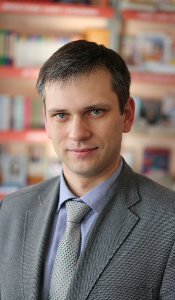APPROACHES TO THE STUDY OF BILINGUAL SPEECH (BASED ON THE ANALYSIS OF PSYCHOLINGUISTIC STUDIES BY FOREIGN AUTHORS)
Abstract
Goal. The article presents a theoretical review of the approaches of foreign authors studying the problem of the formation and development of bilingual speech. The theoretical analysis of foreign studies, from the point of view of psychological aspects, will allow us to better understand the features of the cognitive development of bilingual children (in particular, the features of their speech development).
The method or methodology of the work. The basis of the work is the theoretical methods of research in psychology: the method of induction, comparison and generalization.
The results of the work. The article analyzes psycholinguistic theories with an emphasis on the analysis of the functioning of mental processes (in particular, speech). The generalization of the materials of foreign practitioners will strengthen the content of correctional and developmental programs for bilingual children, improve pedagogical technologies of teaching a foreign language, refine the techniques of development and formation of cognitive processes based on the psychological foundations of teaching using methods of psychological practice.
The scope of the results. The results of the research can be applied in the field of education and pedagogical activity, as well as in the field of applied psychology.
Downloads
References
Anderson R.W. Schema-Directed Processes in Language Comprehension / R.W. Anderson, A. Lesgold, J. Pelegrino, S. Forkkema, R. Glaser (Eds.). Cognitive Psychology and Instruction. New York, 1978, vol. 5, pp. 67-82. https://doi.org/10.1007/978-1-4684-2535-2_8
Anderson R.W. Pidginization and creolization as language acquisition. Rowley, Mass.: Newbury House, 1983, 337 р.
Aitchison J. Words in the mind: an introduction to the mental lexicon. International Journal of Scientific and Research Publications, 2003, vol. 7, pp. 125–130.
Aitchison J. Linguistics made easy: the key facts of linguistics. Hachette UK. Publications, 2012, p. 96.
Bialystok E., Craik F.I.M., Klein R., Viswanathan M. Bilingualism, aging, and cognitive control: Evidence from the Simon task. Psychology and Aging., 2004, vol. 19, no. 2, pp. 290-303. https://doi.org/10.1037/0882-7974.19.2.290
Bialystok E., Barac R. Bilingual effects on cognitive and linguistic development: role of language, cultural background, and education. Child Dev., 2012.
Ellis R., Yuan F. The effects of pre-task planning and on-line planning on fluency, complexity and accuracy in L2 oral production. Applied Linguistics, 2003, vol. 24, no. 1, pp. 1-27. https://doi.org/10.1093/applin/24.1.1
Giles H., McGlone M.S. Language and interpersonal communication. M. l. Knapp & J.A. Daly (Eds.), Handbook of interpersonal communication (4 th ed., pp. 201-237). Thousand Oaks, CA: Sage, 2011.
Givon, Т. Mind, Code and Context: Essays in Pragmatics. Hoboken: Taylor and Francis, 2014.
Grammont M., Ronjat J. Une vie dans les langues. Théorie et pratique de l’acquisition bilingue et de l’intercompréhension. 2016, p. 1.
Naif Althobaiti, Corrective Feedback: A Bridge between Cognitive Interactionist and social Interactionist Perspectives. American journal of Education Research, 2014, vol. 2, no. 10, pp. 950-954. https://doi.org/10.12691/education-2-10-15
Ricardo E.S. Stephen Krashens Theory of Second Language Acquisition. Last revision: October 2019.
Krashen S. Principles and Practice in Second Language Acquisition. Oxford: Pergamon Press, 1982, 132 р.
Lamandella J.T. General principles of neurofunctional organization and their manifestations in primary and nonprimary language acquisition. Language Learning, 1977, vol. 27, no. 1, pp. 155-196. https://doi.org/10.1111/j.1467-1770.1977.tb00298.x
MacWhinney B. Computational analysis of interactions. The handbook of child language. 2017, pp. 152-178
MacWhinney B, Zhao H. The instructed learning of form function mappings in the English article system. The Modern Language Journal, 2018, vol. 102, no. 1, pp. 99-119. https://doi.org/10.1111/modl.12449
Schumann J. H. The Encyclopedia of Applied Linguistics. November 2012.
Yoshida H., Hanania R. If it’s red, it’s not Vap: How competitions among words may benefit early word learning. First Language, 2012, vol. 33, no. 1, pp. 3-19. https://doi.org/10.1177/0142723711422632
Yoshida H., Burling J.M. Highlighting: a mechanism relevant for word learning. Frontiers in Psychology, 2012, vol. 3, 262. https://doi.org/10.3389/fpsyg.2012.00262
Yoshida H. A cross-linguistic study of sound symbolism in children’s verb learning. Journal of Cognition and Development, 2012, vol. 13, no. 2, pp. 232-265. https://doi.org/10.1080/15248372.2011.573515
Abstract views: 169 PDF Downloads: 120
Copyright (c) 2021 Ranjan Ravi

This work is licensed under a Creative Commons Attribution-NonCommercial-NoDerivatives 4.0 International License.























